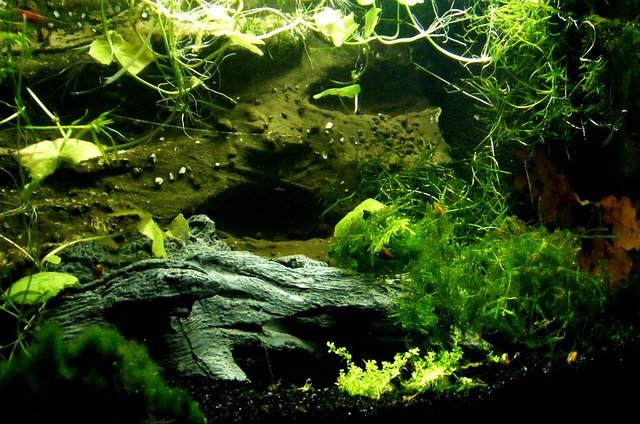Aquascaping: The Art of Underwater Gardening
In the world of aquarium keeping, a captivating trend has emerged that combines the serenity of aquatic life with the creativity of landscape design. Aquascaping, the art of underwater gardening, has taken the fishkeeping hobby by storm, transforming simple fish tanks into breathtaking underwater landscapes that mimic natural ecosystems. This innovative approach not only enhances the visual appeal of aquariums but also provides a more enriching environment for aquatic inhabitants.

The Origins of Aquascaping
Aquascaping traces its roots back to the 1930s in the Netherlands, where hobbyists began experimenting with arranging aquatic plants in their tanks. However, it wasn’t until the 1990s that aquascaping truly gained momentum as a distinct art form. Japanese aquarist Takashi Amano is widely credited with popularising the practice, drawing inspiration from traditional Japanese gardening techniques and applying them to underwater environments.
Amano’s nature aquariums revolutionised the hobby, introducing concepts like the golden ratio and the rule of thirds to create balanced, aesthetically pleasing compositions. His work inspired a new generation of aquascapers worldwide, leading to the development of various styles and techniques that continue to evolve today.
Styles and Techniques in Aquascaping
Aquascaping encompasses several distinct styles, each with its own unique characteristics and challenges. The Dutch style, one of the earliest forms, focuses on dense plantings with a variety of colourful species arranged in neat rows. In contrast, the Nature Aquarium style, popularised by Amano, aims to recreate natural landscapes underwater, often featuring driftwood, rocks, and carefully selected plant species to mimic specific biotopes.
The Iwagumi style, characterised by its minimalist approach, uses carefully placed rocks as the focal point, with sparse plantings to create a sense of scale and depth. More recently, the biotope aquarium has gained popularity, aiming to replicate specific natural habitats with extreme accuracy, including water parameters, substrate, and endemic species.
Essential Elements of a Successful Aquascape
Creating a stunning aquascape requires careful consideration of several key elements. The hardscape, consisting of rocks, driftwood, or other non-living materials, forms the backbone of the design. These elements provide structure and focal points around which the rest of the aquascape is built.
Plant selection is crucial, with considerations for growth rates, colour, and texture. Carpeting plants create lush foregrounds, while stem plants add height and volume. Slow-growing epiphytes like Anubias and Java Fern are often attached to hardscape elements for added interest.
Lighting plays a vital role in both aesthetics and plant health. High-quality LED systems, which can cost anywhere from £100 to over £1,000, offer customisable spectrums and intensities to suit different plant species and create dramatic effects.
The Science Behind the Art
Successful aquascaping relies heavily on understanding the biological and chemical processes at work in an aquarium. Proper filtration, CO2 supplementation, and nutrient management are essential for maintaining healthy plant growth and water quality.
Many aquascapers use advanced CO2 injection systems, which can range from £50 for basic setups to £300 or more for high-end models. These systems provide the carbon dioxide necessary for lush plant growth, but require careful monitoring to maintain optimal levels.
Fertilisation regimes are tailored to the specific needs of the planted aquarium, with enthusiasts often using a combination of root tabs and liquid fertilisers to ensure their plants receive all necessary nutrients. The cost of these products can vary widely, from £10 for basic fertilisers to over £100 for comprehensive kits designed for high-tech setups.
The Impact of Aquascaping on the Aquarium Industry
The rise of aquascaping has had a significant impact on the aquarium industry, driving innovation in equipment and spurring the development of new plant varieties. Specialised tools, such as curved scissors and tweezers for precise plant trimming, have become essential for serious aquascapers. These tools can range from £20 for basic sets to over £100 for professional-grade equipment.
The demand for unique and rare aquatic plants has led to advancements in tissue culture propagation techniques, making a wider variety of species available to hobbyists. Some rare or difficult-to-grow species can command prices of £50 or more for a single specimen.
Aquascaping Competitions and Community
International aquascaping competitions have emerged as a platform for enthusiasts to showcase their skills and creativity. Events like the International Aquatic Plants Layout Contest (IAPLC) attract thousands of entries from around the world, with top prizes often exceeding £10,000 in value.
These competitions have fostered a global community of aquascapers who share techniques, inspiration, and advice through online forums and social media platforms. The community aspect has been instrumental in advancing the art form and making it more accessible to newcomers.
The Future of Aquascaping
As awareness of environmental issues grows, many aquascapers are incorporating conservation themes into their work. Biotope aquariums that accurately represent threatened habitats serve as educational tools, raising awareness about the importance of preserving aquatic ecosystems.
Technological advancements continue to shape the future of aquascaping. Smart aquarium systems that allow for precise control of lighting, CO2 levels, and nutrient dosing via smartphone apps are becoming increasingly popular. These high-tech setups can cost upwards of £1,000 but offer unprecedented control and convenience for serious enthusiasts.
In conclusion, aquascaping represents a fascinating intersection of art, science, and nature. As the hobby continues to evolve, it offers endless possibilities for creativity and innovation, inviting enthusiasts to explore the beauty and complexity of underwater ecosystems in miniature form.




